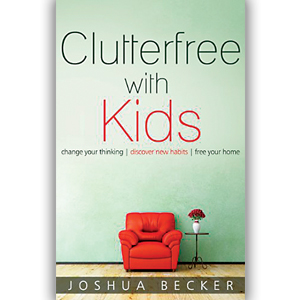A Penny Saved
Author Neale S. Godfrey insists children “must be able to see, and be able to identify, the physical substance of money before they can do anything with it.” Therefore, in addition to talking about finances from as young as three-years-old, A Penny Saved advises parents to start with simple money identification games.
How do you know if your child is ready to earn money? Godfrey maintains that once a child knows what Mommy and Daddy do with money in the store then he or she is ready to earn it. As far as A Penny Saved is concerned, “Work for pay means an allowance based on a specified series of chores that are over and above what is expected of your child, as part of either his personal development or his normal role as a contributing member of your household.”
In other words, Godfrey argues “A child should never be paid for brushing his teeth or going to bed on time.” Children also shouldn’t be paid for what Godfrey calls Citizen of the Household Chores, which are “whatever everyone in the household is generally expected to chip in and do.” Examples might be cleaning up toys, putting clothes in the hamper, or clearing the table. Rather work for pay chores are “whatever you designate as a special chores that will become the child’s responsibility for the week…like dusting or sorting the recycling.”
How does payment work? A Penny Saved suggests that the reward for behavior, such as being a good citizen of the household, be a behavior oriented treat, like a picnic instead of cash. A Saturday Box, a “repository for toys that have been confiscated for being left around,” can be established as well.
When it comes to the work for pay allowance, pay the child her age. “For a three-year-old, $3 a week, for a six-year-old, $6 a week …If you have a large family, or if your family finances are such that you absolutely can’t afford that much, you can make it two-thirds or half but stick to the same basic schedule, with a ‘raise’ each birthday. Then, make sure you never pay anyone unless all of their work is done.
What do they do with the money? A Penny Saved suggests your child start with a three jar system – one for pocket money, one for medium-term savings, and one for long-term savings – giving a third of her earnings to each jar.
You’ll know it’s time to expand the jar system when your child can answer these questions, between ages seven and nine.
- · Can she explain to you how a credit card works?
- · Can you send him to the grocery store with money and a shopping list? Can he buy all the items on the list and calculate the correct change?
- · At a restaurant, can she total the bill, compute the tax, and figure out how to leave a 15 percent tip?
Then, add a fourth jar to your system for taxes, with them contributing 15% of their earnings. “As adults we understand what taxes do, and depending on our political and economic beliefs, we more or less accept them as a good thing or a necessary evil. But we almost never talk about them except to complain about them, and children do hear that.” Godfrey claims you need to make sure your school-aged children understand that taxes are simply part of our society.
Finally, designate a jar for charity – another ten percent of her income. “The sooner your child gets used to the idea of charitable giving as an integral part of her financial life, the better. Giving is learned, not a natural response.”
Once your child hits eleven or twelve, Godfrey says they’ll be ready to be integrated into the next phase of her financial development – the family bill-paying project. Matters like credit and investing can be addressed so that when your child is of working age they will have the values and the life skills they need to live in the real world.
I’ll be honest with you. There’s a lot of information in this book to digest, much less implement, especially when you consider that I’m already busy trying to incorporate all of the discipline, academic and creativity suggestions from all of the other books I’m blogging about. But I have seen a difference in my children’s money mindset just by incorporating a modified version with a good citizen chart and work-for-pay chores that provide earnings for a pocket-money jar, a savings jar, and a charity jar.
I was at Dollar Tree recently, about to pick up one of those register items that you don’t really need but end up tossing in your basket while waiting in line, when my five-year-old said, “Mom, do you want to be poor? We don’t need that,” which was the kind of sound judgment I hoped to hear after reading this book, but it may prove harder to live with as it means I’ll have to use it, too.
Don’t forget to like Parenting by the Book on Facebook for updates on blog posts.
Follow my other blog Befriending Forty at http://befriendingforty.blogspot.com and find out what happens when the person I thought I’d be meets the person I actually became.






